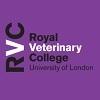Explore all the information on
Poultry vaccines
Disease prevention by vaccination is an integral part of flock health management protocols. Active immunization using live vaccines is the current industry standard. Routinely used vaccines in chickens include MDV, NDV, IBV, and IBDV, and in turkeys NDV and HEV. Newer vaccines, including molecular recombinants in which genes of immunogenic proteins from infectious agents are inserted into a live viral vector, are also being examined for commercial use. Efforts are under way to enhance vaccine efficacy by the use of adjuvants, particularly cytokines. The vaccine delivery systems include in ovo injection, aerosol, spray, drinking water, eye drop, and wing web injection. The in ovo vaccination procedure is relatively new and at the present time it is used primarily to vaccinate broiler chickens against MDV. Birds respond to vaccines by developing humoral and cellular immune responses. There are two main types of vaccine available for poultry: live or killed.
Derek Detzler (JEFO) talked about antibiotic-free production and poultry vaccination, during the 1st PoultryUniverse Coccidiosis Congress in Curitiba, Brazil....
Comments : 1
Recommendations: 8
Introduction The avian influenza virus (AIV) H9N2 subtype was first characterized in 1966 as causing mild respiratory diseases in turkeys (Homme and Easterday, 1970) and, for the first decade after its isolation, was found only in shorebirds and mallards (Kawaoka, et al., 1988). However, after almost 50-years evolution and propagation, the H9N2 viruses have spread across most of...
Comments : 93
Recommendations: 10


Feed Conversion Ratio: Unveiling the Secrets of Sustainable Livestock Production
Suggested link
Sergio Luiz Vieira (UFRGS, Brazil), spoke about his experience with vaccine production and use when treating this disease, during the 1st PoultryUniverse Coccidiosis Congress in Curitiba, Brazil....
Comments : 4
Recommendations: 2
Charles Hofacre (Southern Poultry Research) discussed the reduction of Salmonella on broilers going to the processing plant and gave additional recommendations, during IPPE 2019 in Atlanta, USA....
Comments : 4
Recommendations: 2
What is ILT? Infectious laryngotracheitis, also known as LT or ILT, has often caused disease outbreaks at fairs in Michigan. ILT is a viral disease of chickens that can also cause disease in peafowl and pheasants. It typically results in a drastic death loss in a flock. ILT is easily spread by birds that are experiencing the disease, those that have survived the disease, birds that have been vaccinated with a live...
Comments : 7
Recommendations: 5
Introduction Necrotic enteritis (NE) is one of the most important enteric infectious diseases affecting global poultry production with an estimated annual economic loss of more than $2 billion, largely attributable to increased costs associated with medical treatments and impaired growth performance [1,2]. Host-pathogen interaction in NE is complex and the nature of host and pathogen genetic factors implicated in NE pathogenesis is still unknown [3,4]. NE is caused by infection...
Comments : 1
Recommendations: 2
INTRODUCTION
Fowl cholera is a cosmopolitan disease that affects all kinds of birds but often occurs in chickens and turkeys reared under intensive farming conditions (7). In Argentina, fowl cholera outbreaks are important in broiler breeders. The disease takes place as an acute fatal disease or most commonly, as a chronic infection. Vaccination should be considered in areas where fowl cholera is prevalent using either available bacterins and/or live vaccines, but...
Comments : 0
Recommendations: 0
Elise Myers (MSD) spoke on the evolution of vaccines and tolerance of anticoccidials, among other topics, during the 1st PoultryUniverse Coccidiosis Congress in Curitiba, Brazil....
Comments : 12
Recommendations: 2
Fiona Tomley (Royal Veterinary College) and Doug Korver joined Elizabeth Santin and Ricardo Hayashi to share their insights on Coccidiosis challenges, poultry immunity and vaccination, during the 1st PoultryUniverse Coccidiosis Congress in Curitiba, Brazil....
Comments : 3
Recommendations: 0
Introduction Coccidiosis is a major global veterinary health problem impacting on the production of domesticated sheep, cattle, poultry and even fish. It is a particularly problematic disease in chickens (due to their intense rearing conditions), costing the industry £38 million per year in the UK alone and, extrapolating from this, over 2 billion US dollars to the world’s farmers and poultry industries annually [1]. It is caused by various species of the genus,...
Comments : 0
Recommendations: 1


Lost in the Market Uncertainty Caused by the Outbreak
Suggested link
Alan Young (Medgene Labs) spoke on outbreak responses, as well as vaccination programs and development, during 2019 NIAA Annual Conference: Animal Agriculture - Innovation, Technology and Consumer Engagement in Des Moines, Iowa, USA....
Comments : 1
Recommendations: 0
Sarah Tomlinson (USDA) gave an overview of the process, during 2019 NIAA Annual Conference: Animal Agriculture - Innovation, Technology and Consumer Engagement in Des Moines, Iowa, USA....
Comments : 0
Recommendations: 2
Patti J. Miller, Veterinary Medical Officer at the Southeast Poultry Research Laboratory (USDA), presented her research on Newcastle disease virus, clinical signs, strains and vaccines, during ANECA 2017....
Comments : 5
Recommendations: 6
Dino Garcez (DSM), Elise Myers (MSD), Jesus Rubio (Hipra), Tobias Fernandes Filho (Boehringer-Ingelheim), Deyse Galle (Elanco), Giankleber Diniz (Ceva) and Eduardo Muniz (Zoetis) discussed solutions and initiatives taken in the poultry industry, during the 1st PoultryUniverse Coccidiosis Congress in Curitiba, Brazil....
Comments : 1
Recommendations: 1


Supplemental Bacillus subtilis DSM 32315 modulates intestinal structure, microbial composition and improve the performance in broiler chickens
Suggested link
Christi Swaggerty (USDA) talked about Eimeria infection, vaccines and nutrition, among other aspects, during the 1st PoultryUniverse Coccidiosis Congress in Curitiba, Brazil....
Comments : 2
Recommendations: 2
I would be grateful if you comment on
1- What is the reason behind a short persistent immunity? I, sometimes, face a short period of immunity following vaccination by NDV clone 30 and Ma 5 vaccine in parent breeder during laying. What do you advise me to review?
2- What causes the interference of mild field challenge during vaccination? ...
Comments : 5
Recommendations: 0
Johan Van Erum (Galluvet) discussed live Coccidiosis vaccination, during the 1st PoultryUniverse Coccidiosis Congress in Curitiba, Brazil....
Comments : 1
Recommendations: 0
Udi Ashash (Director of Global Technical Services, Phibro Vaccines) explained the effect of migratory birds, and gave recommendations on eradication and vaccination, during the Avian Influenza International Seminar 2017 in Buenos Aires, Argentina....
Comments : 12
Recommendations: 6


Feed Conversion Ratio: Unveiling the Secrets of Sustainable Livestock Production
Suggested link
Damer Blake (Royal Veterinary College) talked about the benefit of additional antigens in the development of vaccines using Eimeria as a vector, during the 1st PoultryUniverse Coccidiosis Congress in Curitiba, Brazil....
Comments : 1
Recommendations: 3
I would be grateful if you tell me 1- The duration of immunity that NDV and IB live vaccine given in parent breeder 2-Sometimes I encounter by low NDV and IB persistence of immunity. What are the reasons? I would be thankful if there is a reference 3-I vaccinated my flock with Ma5 and clone 3 when I conducted Elisa to check the success of vaccination I found the titre of NDV is high. What is the reason behind that?
Thanks and regards. ...
Comments : 5
Recommendations: 0






.jpg&w=3840&q=75)













.jpg&w=3840&q=75)















